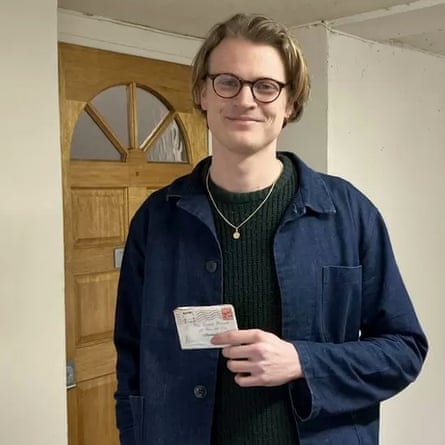That’s still higher than most Americans: A scant 16 percent of the eligible U.S. population has gotten the updated shot. But when it comes to Covid, nursing home residents have never been like most Americans. Nursing home residents make up about one out of every six cumulative Covid deaths in the U.S., according to AARP, and hundreds of residents are still dying each week.
Nearly three years since SARS-CoV-2 devastated residents, their families and staff, the Biden administration is struggling to ensure the country’s most vulnerable population is protected from the virus. As the federal government loosens its grip on managing the pandemic in long-term care facilities — as it has throughout society — not all nursing homes are stepping into the breach to encourage residents and staff to get boosted, raising the question of who, in a Covid-endemic America, is ultimately responsible for continuing to protect this uniquely exposed community from an unpredictable disease.
“There’s this real disconnect between the idea that we have to be hypervigilant protecting residents, but at the same time the underlying policy isn’t reflecting that,” said Sam Brooks, director of public policy for the National Consumer Voice for Quality Long-Term Care. “It’s kind of back to how things were before. And that’s sad. Because how it was before was why this happened.”
The Trump and then Biden administrations’ first nursing home vaccination campaign was a bright spot in the early pandemic response: The Centers for Disease Control and Prevention teamed up with CVS and Walgreens to stage free, on-site clinics at thousands of long-term care facilities across the country, ultimately administering some eight million shots.
Later, the Centers for Medicare and Medicaid Services, which monitors the more-than-15,000 nursing homes that receive Medicare and Medicaid dollars, introduced a requirement that those facilities’ staff must get their primary Covid vaccination.
The two policies helped push both groups’ Covid vaccination rates far above the nursing home vaccination rates for other diseases, such as flu and pneumococcal.
But they weren’t used again for the bivalent shot, which protects against the Covid strain that now comprises the majority of cases. Nursing home residents who are not up to date on their Covid vaccinations are up to 50 percent more likely to be infected than their peers who are, according to the CDC.
The CDC still partners with retail pharmacies at tens of thousands of locations around the country to administer vaccines, but has scaled back the program, putting the onus on long-term facilities to arrange most onsite vaccine clinics from pharmacies or state health departments, or administer the vaccine themselves.
CMS also has not updated its staff vaccine mandate to include the bivalent shot or previous boosters, despite research showing that higher staff vaccination rates are associated with lower rates of infection and death among residents.
“For the initial vaccination campaign in 2021, we saw an extraordinary effort and we got extraordinary results. For delivering Covid boosters to nursing home residents, we saw a normal effort and we got normal results,” said Ari Houser, senior methods advisor at the AARP Public Policy Institute. “I had hoped that the lesson learned from that very successful initial vaccination campaign is that we should do this more often… But it doesn’t seem to have been the way things went.”
Everyone agrees that vaccine fatigue among residents and staff alike — as in the rest of the country — is pervasive, but nursing homes are doing an uneven job on their own navigating that challenge, advocates say.
Administration health officials, for their part, say they have tried tackling the low booster rate from every angle.
Nursing home residents remain the nation’s “most vulnerable” group, CDC Director Rochelle Walensky said on Feb. 8 while testifying before Congress, adding that the current booster vaccination rate “is not enough.”
In November, CMS reminded nursing homes that they are required to educate residents and staff about Covid vaccines and to offer to administer boosters. The agency also provided more assistance to facilities to help them set up on-site clinics and distribute vaccine education materials. The agency has sent a list of nursing homes’ vaccination rates to states, and last month CMS Administrator Chiquita Brooks-LaSure wrote to the governors of Arizona, Nevada, Florida, Texas and Mississippi — the five states with the lowest resident booster rates — and requested calls about how to improve the situation. CMS declined to say whether those have taken place.
When asked whether CMS considered updating the staff vaccine mandate to include the latest shot, a CMS spokesperson responded that boosters were not recommended at the time the rule was made in late 2021, but that the agency has “continued to encourage all eligible individuals to remain up to date by receiving the latest updated bivalent vaccine.”
As for the on-site clinics, when the booster was authorized, officials determined that vaccine demand wasn’t sufficient at this point in the pandemic to flood nursing homes with clinics again, particularly if relatively few residents might get vaccinated at each event.
The CDC has instead focused its efforts on teaming up with national organizations trying to combat vaccine fatigue and hesitancy and help long-term care facilities link up with pharmacies, among other measures. Later this month, CDC is scheduled to host a “bootcamp” for long-term care facility administrators and health care providers to help them figure out how to improve vaccine confidence in their facilities.
Nursing home representatives say the current system is working as well as can be expected three years into the pandemic. Facilities aren’t having any problem accessing or administering the vaccines, they say, but vaccine fatigue is widespread among residents, family members and the communities where staff live.
Residents need to get boosted, but they’re not seeing the same scale of death and illness happening as they were when the first vaccine came out, said David Gifford, chief medical officer of the American Health Care Association and National Center for Assisted Living, which represents over 14,000 nursing homes and assisted living communities.
“It’s a demand problem. You can send out the National Guard to every nursing home. You’re not going to see the vaccine go up,” he said. “How much do we want to badger the elderly to get the vaccine? That’s what it comes down to. Some people may not be badgering them as hard as other people.”
‘It comes down to the leadership’
Arizona, which has the lowest resident booster rate in the nation at 35 percent, was one of the states to get a letter from Brooks-LaSure.
“It comes down to the leadership of the facilities believing in the vaccine,” said David Voepel, CEO of the Arizona Health Care Association, a member association for nursing homes in the state. “Once you have that leadership buy-in and that education moving throughout the facility, then it spreads like wildfire — either positive or negative.”
Voepel said that expanding the CMS staffing mandate to include the booster would probably not sit well in Arizona, a sentiment shared broadly in an industry that worries another requirement would make it even harder to recruit and retain workers amid a long-running staffing crisis.
As for having more free, on-site clinics come to facilities, Voepel said the federal government probably should have “done more on that end, but hindsight is 20-20.”
The Arizona Department of Health Services is worried about the steep drop between the primary vaccine numbers and booster numbers in older adults, spokesperson Steve Elliott said in a statement to POLITICO.
“The results have been far different from the earliest phase of the COVID-19 vaccination response, when Arizona’s long-term care facilities had success getting residents the primary series of COVID-19 vaccinations through the CDC’s partnership with Walgreens and CVS,” he wrote. “Uptake of the bivalent booster is lower than everyone wishes among all Arizonans ages 65 and older.”
The state has set up a mobile vaccination program that visits individuals in their homes and at facilities, he said. But so far, since the bivalent booster was rolled out, that service has only visited about 30 of the state’s 155 licensed long-term care facilities as of the end of last year, he said.
“Facilities struggle to attract and retain employees, and they have faced an early surge in influenza and RSV, in addition to COVID-19 remaining active in communities,” Elliott said. “Some facilities have told us that arranging for and holding a mobile clinic is difficult for already taxed employees.”
Older Arizonans still have a lot of questions about the vaccine, including confusion over why the bivalent shot is different from the boosters that came before it, said Voepel. Both the state and federal education campaigns are underway, he said, but there are still a lot of things they have “to work through.”
Answering those questions — and battling vaccine misinformation and fatigue — has been a central plank of the federal effort to get more older Americans boosted this fall and winter.
Late last year, HHS ran ads about the updated vaccine aimed at older adults in several underserved communities. The CDC ran pre-Thanksgiving and holiday campaigns to reach older adults and long-term care facilities, both by sending out flyers to distribute in facilities and through social media.
But observers say those campaigns, however well intentioned, simply have not landed in a sprawling network of facilities where resident and staff attitudes toward the Covid vaccines are influenced by everything from the homes’ leadership to staffing numbers to local politics.
“If you’re going to move the needle, it’s going to take a lot more than education,” said David Grabowski, a professor of health care policy at Harvard Medical School who studies the nursing home industry. He said he was “skeptical” about the administration’s decision to focus on education in nursing homes when it came to the booster, given that recent research has shown its impact to be limited on both nursing home staff and on resident vaccination rates. “I would say put those dollars towards clinics, or something that has been shown to work,” he said.
‘Nothing has really changed’
America’s nursing homes have been at the epicenter of the pandemic since its earliest days, when the nation watched as cases of a new virus spread rapidly through a nursing home in Washington State.
That nursing home received a fine of hundreds of thousands of dollars for violating infection control regulations, one of the quality of care standards that CMS measures in nursing homes that receive federal money.
That was rare. An analysis published in May 2020 by the Government Accountability Office found that between 2013 and 2017, more than 80 percent of U.S. nursing homes had at least one infection prevention and control violation, and half of those had multiple violations.
The state surveyors who conducted the evaluations classified almost every one of the violations as “not severe” — meaning they believed no residents were harmed — and only about 1 percent of the violations resulted in any enforcement action by CMS, like having to pay a fine.
A year ago, the Biden administration laid out an ambitious plan to make nursing homes safer and more transparent, noting that the hundreds of thousands of Covid deaths among residents and staff “highlighted the tragic impact of substandard conditions at nursing homes.”
But the pandemic, while raising awareness of the need for better infection prevention and control in nursing homes, did not necessarily change how some violations of best practices were evaluated and regulated.
In 2021 and 2022, during the height of the pandemic, inspectors reported that the vast majority of infection prevention and control violations they found caused “no actual harm,” according to a CMS database. That level of citation typically requires a facility to create a “plan of correction,” but it is extremely rare for a facility to face any financial penalty, says Brooks of the National Consumer Voice for Quality Long-Term Care.
When asked whether CMS considered changes to how it regulates infection control after the 2020 GAO report, a CMS spokesperson, in a written response, told POLITICO: “Regardless of whether there is a penalty or not, nursing homes are required to correct their noncompliance in order to continue to participate in the Medicare and Medicaid programs. Plans of correction are a critical tool in this process and play a large role, prior to fines being accessed for continued non-compliance.”
This winter, as Covid cases began to ramp back up, CMS reminded long term care facilities about the importance of infection control, and the White House issued a “winter playbook,” urging facilities to once again try to improve booster rates, test symptomatic residents and staff, make sure treatment options were available and improve indoor air quality.
But without stronger enforcement — and in particular, financial consequences — the industry doesn’t correct itself, said Toby Edelman, a senior policy attorney at the Center for Medicare Advocacy.
“Nothing really has changed. We still have the same deficiencies now,” said Edelman. “It’s very disheartening because this is life and death for so many people.”























